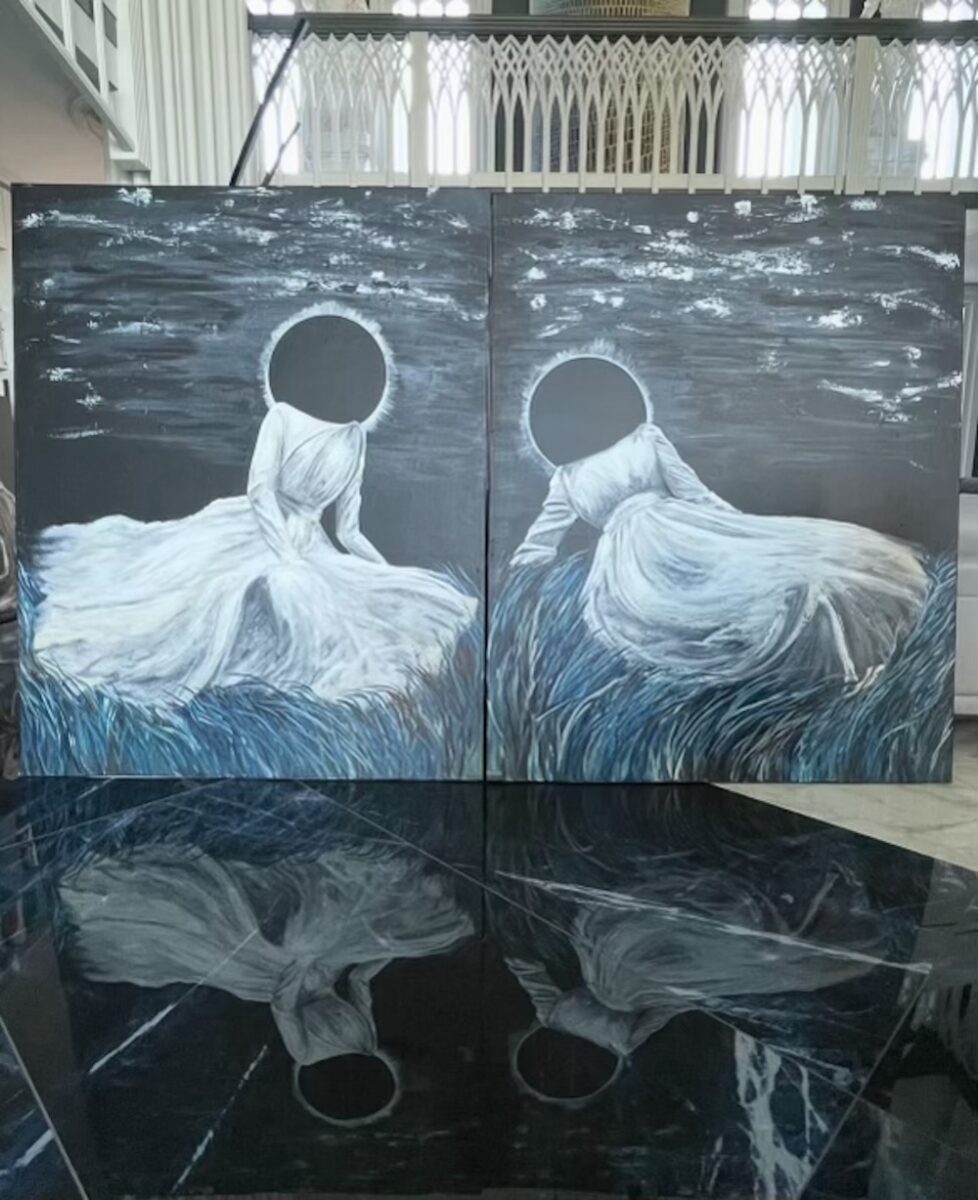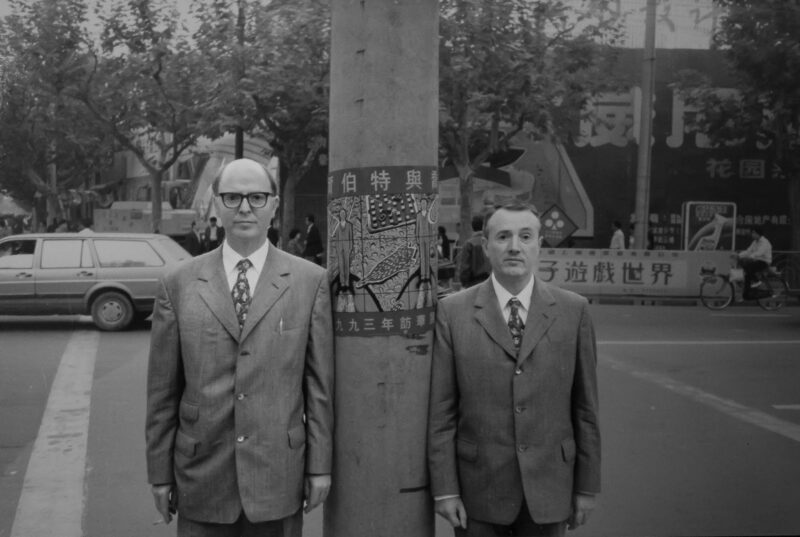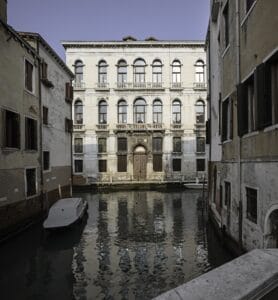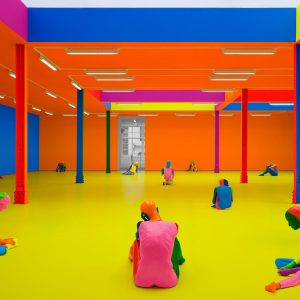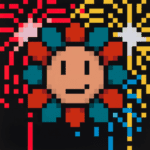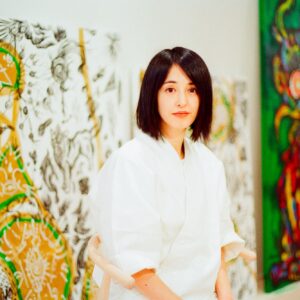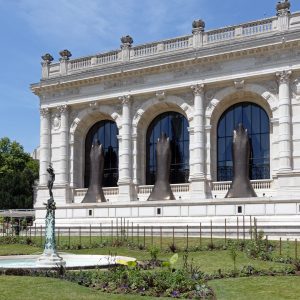“When I get stuck, I ask myself, “What would Lord Byron do?”
“Oh, I love a grey sky,” Arch Hades shares, as we drive the winding country roads on the way to her home and studio, “the sky here is always changing, it’s always surprising me.” Though the poet-turned-artist has called London home for years, she recently jumped on the opportunity to purchase a countryside property, where she now resides with her pet corgi, Byron, when the two are not in the city. In the just-under-two-years since then, the artist has created a haven here, with a home, a studio and even a two-story gothic-inspired library.
A massive pinboard anchors her studio space, with everything from architectural elements to Canaletto theater sets and photographs she sourced online. Other sources of inspiration come from her new bucolic surroundings. A man she saw sitting in a chair while out on a walk one day landed in one of her paintings. A fig tree in her back garden, damaged during a recent storm, made its way into another. Lately, a horse with wildly flailing legs has been galloping through her dreams, after seeing an unforgettable statue on a trip. When she’s not visualizing, she’s busy reading inside her home library.
The artist has had a remarkable career, becoming the highest paid living poet in 2021, when Christies sold her poem Arcadia and it premiered in Florence the following year, much of which she has discussed time and again in interviews and conversations with the press. Rather than turning towards the past, I chose to focus our conversation on the present and the future. The artist made her art fair debut in Miami last year and followed it up earlier this month with ZONA MACO. Soon, she will show at the LA Art Show and is working towards solo moments in London and Venice. The two of us spent the day in her studio and the surrounding countryside, where we discussed the direction of her practice and even fed some friendly crows!
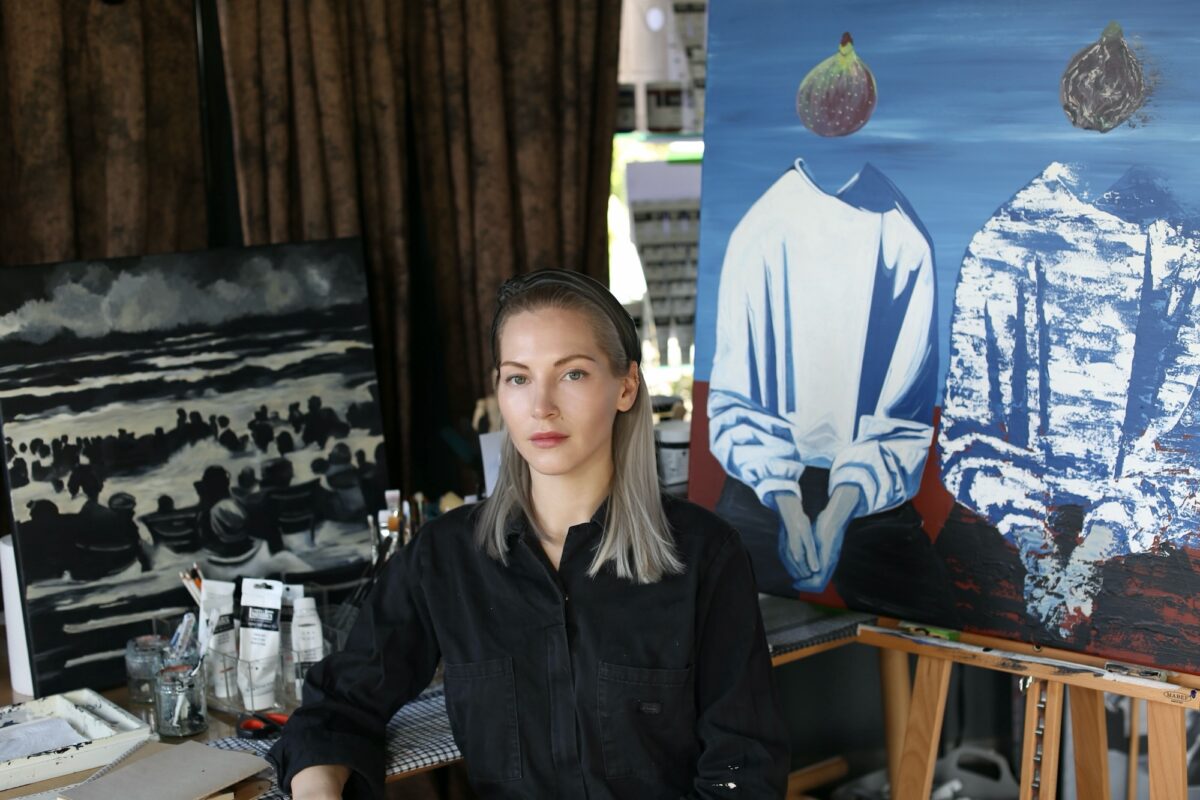
What does the rhythm of your day look like, in and out of the studio?
We get up at six and we are back, walked and breakfasted by eight. I am in the studio from eight to twelve. Then we have lunch and take a walk around two. The second shift is until around six or seven. In the winter months, there is not a lot of daylight so I use this time to gather images and figure out what I need to do. I also am prepping canvases and varnishing. I feed the crows in the morning and two horses down the road in the afternoon.
Tell me about the crows. How did you befriend them?
I spent three weeks just chucking walnuts at them. Eventually, they realized it was food. Now I can recognize certain “regulars” and they expect me. I’m working on my first self portrait now and the crows will be included in it.
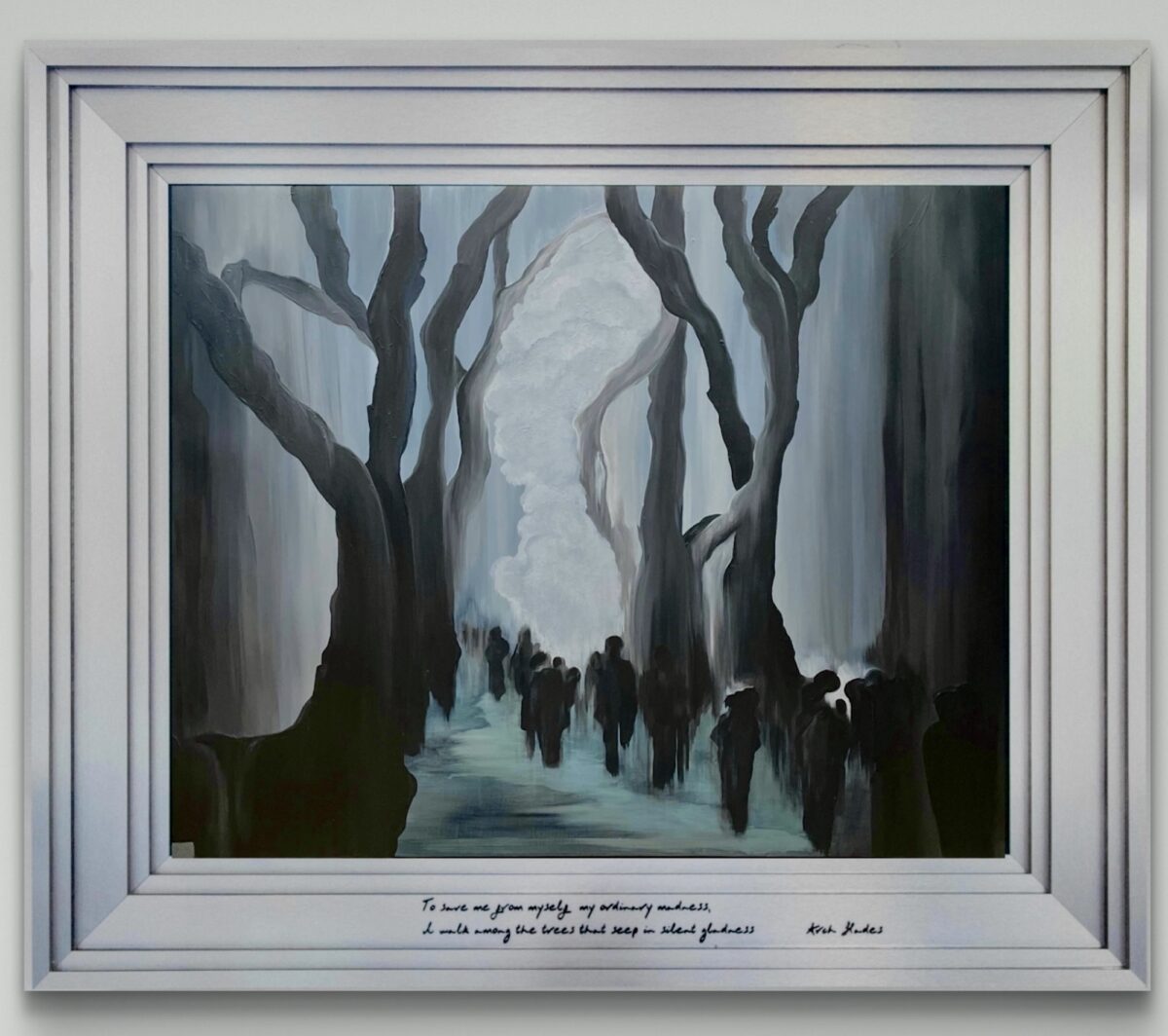
You have made a choice to stay within a mostly grayscale color palette, using certain other colors sparingly. Can you tell us a bit about your materials and the painting process itself?
I only paint with Liquitex, acrylic gets me where I need to be. My studio is in my home so I really can’t deal with the smell of oil and turpentine and the paint is non-toxic to dogs. Here there is Parchment, Light Parchment, Medium Parchment. Then there is Light Grey, Medium Light Grey…I need to come up with a new labeling system. This one is not grey. It looks grey, but it’s Parchment. Parchment has such a warm undertone.
I’ll pick a color and narrow in. You can see my favorite ones: Mars Black, Titanium White, Pyrrole Crimson, Vandyke Red, Prussian Blue…gestures to the table..this is where everything lives. I also love a mega brush. If you get two of them you can sellotape them together to create a sweeping sky…swishing the brush through the air…This is the mega brush in action. I have another favorite brush, I call her Susanna. I love a very smooth canvas. You can have too much paint on a canvas…hot take. When you’re doing geometry and clean lines, feather and fray are unacceptable. I’d much rather be smooth with the paint and create an effect of depth.
Your home library has a stunning collection ranging from political history to art and literature. Can you tell us a bit about it and how you use it in the context of your studio practice?
The library is an extension of the studio. I don’t think I’ve ever had an original thought, I’m a product of what I have consumed. The art books are great references. I’ll sometimes come in here and pull out a book and accidentally spend hours, just finding another and another. There are major Gothic influences in the library. I’m not religious anymore, but I still flirt with the Catholic aesthetic. For example, there are statues of the four seasons. I’m ok with that—the seasons are something I can believe in. Inside the library, there is also work from other artists, like Andrei Zakirzankov. ‘Ex Libris’ is a special gift with some poetry from my fifth volume painted into the work by the artist.
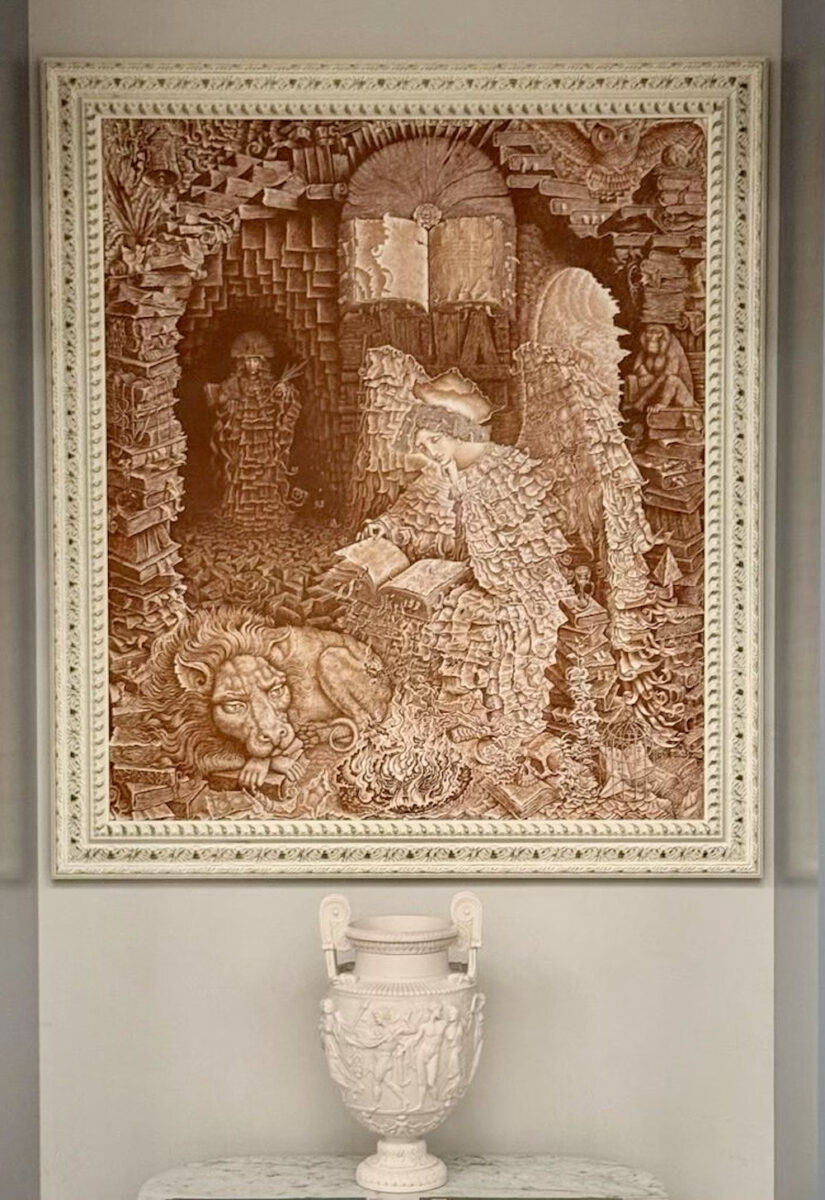
Where do you see your artistic style going? How is it evolving?
There’s surrealist elements but it’s not a random mise en scène. I’m conscious that I’m early on in my career. I’m still very much exploring and not specializing in one particular style—I’m moving between them. It’s ok to change styles, Mondrian did it. Sometimes I have an idea and I just have to do it, so it’s living somewhere.
I think the cleanliness of the line of Mondrian and the playfulness of Magritte surrealism—that would be ideal, like could speak to me visually. I also want to capture the loneliness of Hopper and Hammershøi’s figures from the back. The Hammershøi figures from the back, Mondrian’s line, and the essence of Hopper—that’s the trifle.
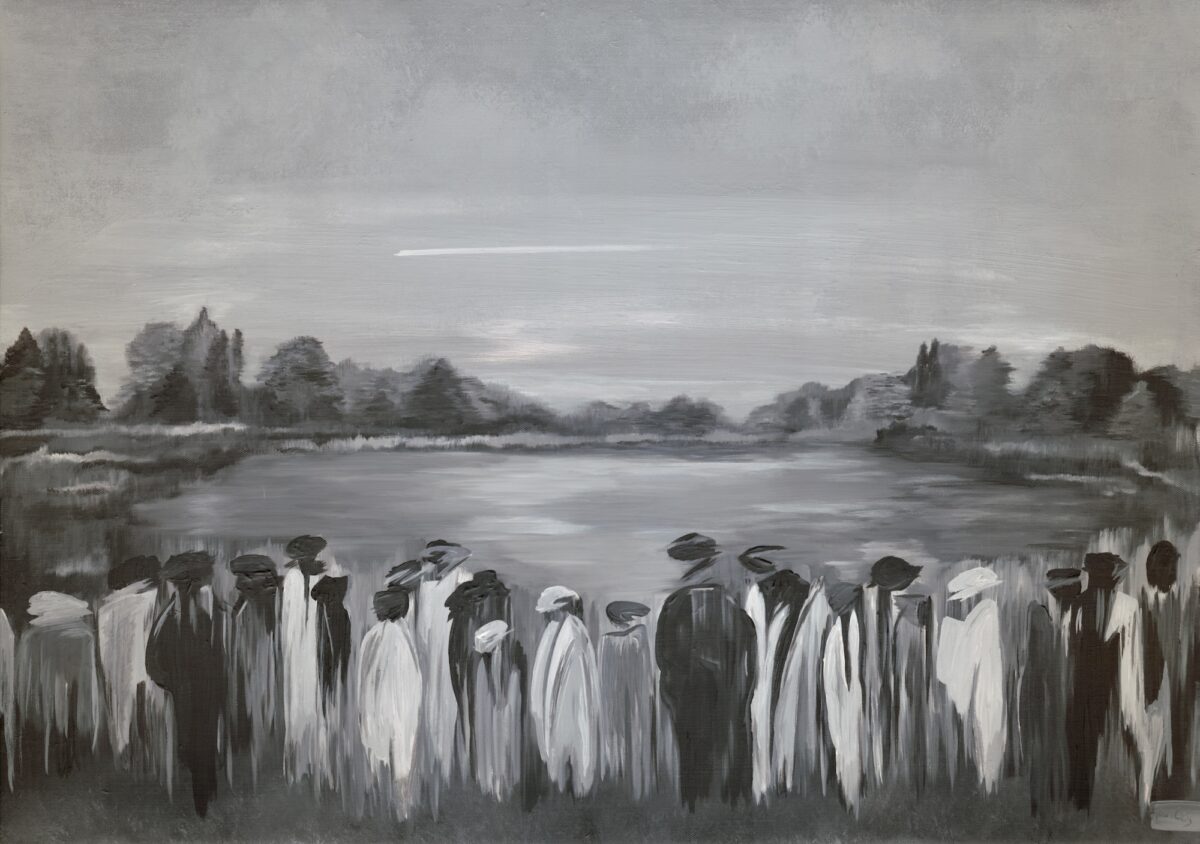
Who are some contemporary artists who inspire you?
Paula Rego. She passed very recently. Also, Julie Curtiss. She has a similar kind of surreal vibe.
I wonder if you could speak about when you first discovered Lord Byron (your dog’s namesake) and your relationship to the Romantic movement.
Lord Byron lived a wild life with an incredible career trajectory – starting in the House of Lords, writing Romantic poetry, then going into exile on his Grand Tour, travelling across Europe while writing social commentary and satire in his epics before becoming involved in European politics and war. Whenever I get stuck, I ask myself, “What would Lord Bryon do?”
I first discovered Byron by accident. I was puttering around in the school library at age 14 or 15. Byron wasn’t on the syllabus. It felt like the biggest rebellion. One of my favorites is “When we two parted”.
It’s so universal in that every single time someone reads it, including myself, they think of someone different. Romantic poets capture human emotion so well and profoundly, but they also try to save the romantic world. Not just Byron, but also Wordsworth, Keats, Shelley…they want to persist in reality and all the feelings that come with it. It saves the world it celebrates and that’s so precious.

The pinboard in your studio is a place for you to sort out ideas and give them a landing place. Can you talk about the role these images play in your practice?
What I produce is what I consume. I have to be visually selective. If an image strikes me visually I want to take it and put it somewhere else and replicate it within my own context and story. Magritte used a set of motifs religiously. It’s the same cloud everywhere. If he likes a sphere, it’s repeated. If you see a hat, it’s the same hat everywhere. Objects take on a different life in Magritte’s hands. It makes you relate to the objects more like, “Oh, right, I am the hat, the sphere. I’m living these lives and these perspectives.” From this postcard, I like this sun. This has gone into the painting you saw upstairs, but the one on the postcard is much rounder somehow. Look at this roof, the slope of it makes it look like it’s in the process of bucking. It reminded me of how a building collapses under its own weight. I love a wonky structure. I want to see a house in the process of being knocked over. How do I paint that? I’m thinking about all these things.

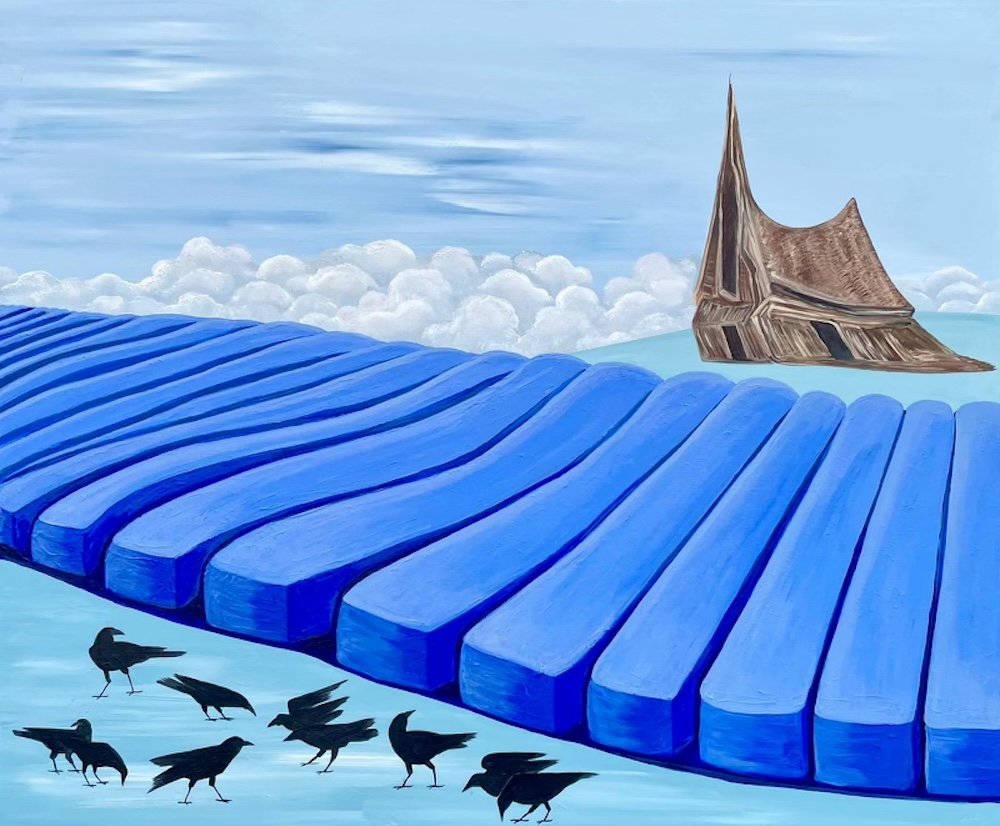
How do you source imagery? Do you search for it or does it organically come to you?
It’s a mix. I’ll go down a specific rabbit hole on the internet sometimes. The algorithm is good. Sometimes, I need to be bombarded with a selection to check out directions. Then, when I stumble on an artist I like, I’ll think, “Oh this reminds me of Andrew Wyeth” and then check that out. The plus side of algorithms is they give you consistent imagery to explore. Then you can re-evaluate, “Actually this is more Edward Hopper. Let’s figure out what he did and why.” Sometimes I delete all my history and that’s fun to play around with, starting with an algorithm from scratch.
Sometimes, I see something and it’s so visually striking I can’t get it out of my head. You’ll see on the pinboard an image of a lamp that was taken at a hotel. I was staring at this lamp for way too long. It was dissolving on itself. I loved the way the light and the shadows looked on the wall. Someone from the hotel asked me if everything was all right!
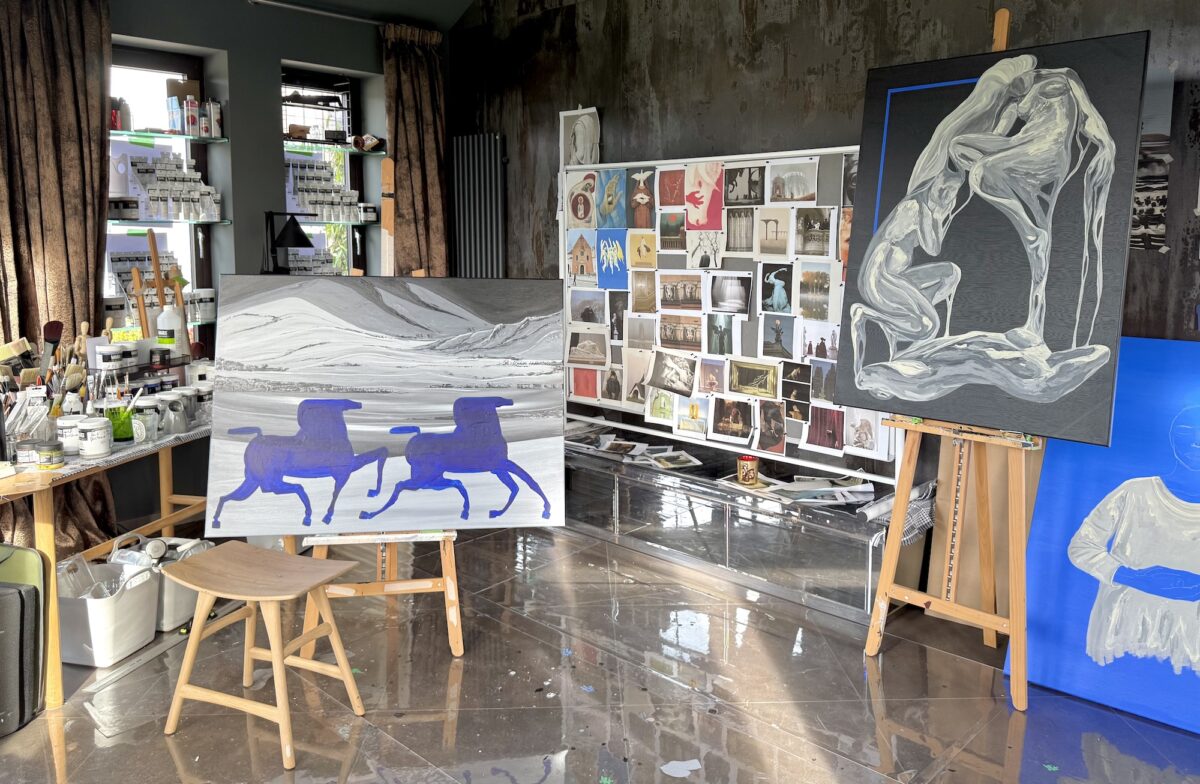
What’s another image that has stuck with you recently?
I’m way too susceptible to imagery. I saw this horse statue in Florida, it’s called The Great American Horse. I’ve been staring at that horse for so long, it’s been running through my dreams. My dreams are all like: a horse here, another horse there, running with its crazy, flat legs
You’ve mentioned how you like that Magritte creates a visual language, repeating the same motifs in his work. What are some of the motifs that repeat in your paintings?
Really fluffy clouds, the same trees and seas and celestial forms. Often, you see only from the back, I paint a lot of figures from the back. There’s a voyeur relationship with viewing women from the back. “Everything is a thief.” It’s a line from Timon of Athens by Shakespeare. I’m constantly looking at other images and pulling something I like from them.
What I love about Canaletto’s landscapes of Venice and London is that if he didn’t like a bridge, for example, he didn’t include it. If he painted a landscape, he made it the landscape he wanted to see. I like that he wasn’t restrained by reality.
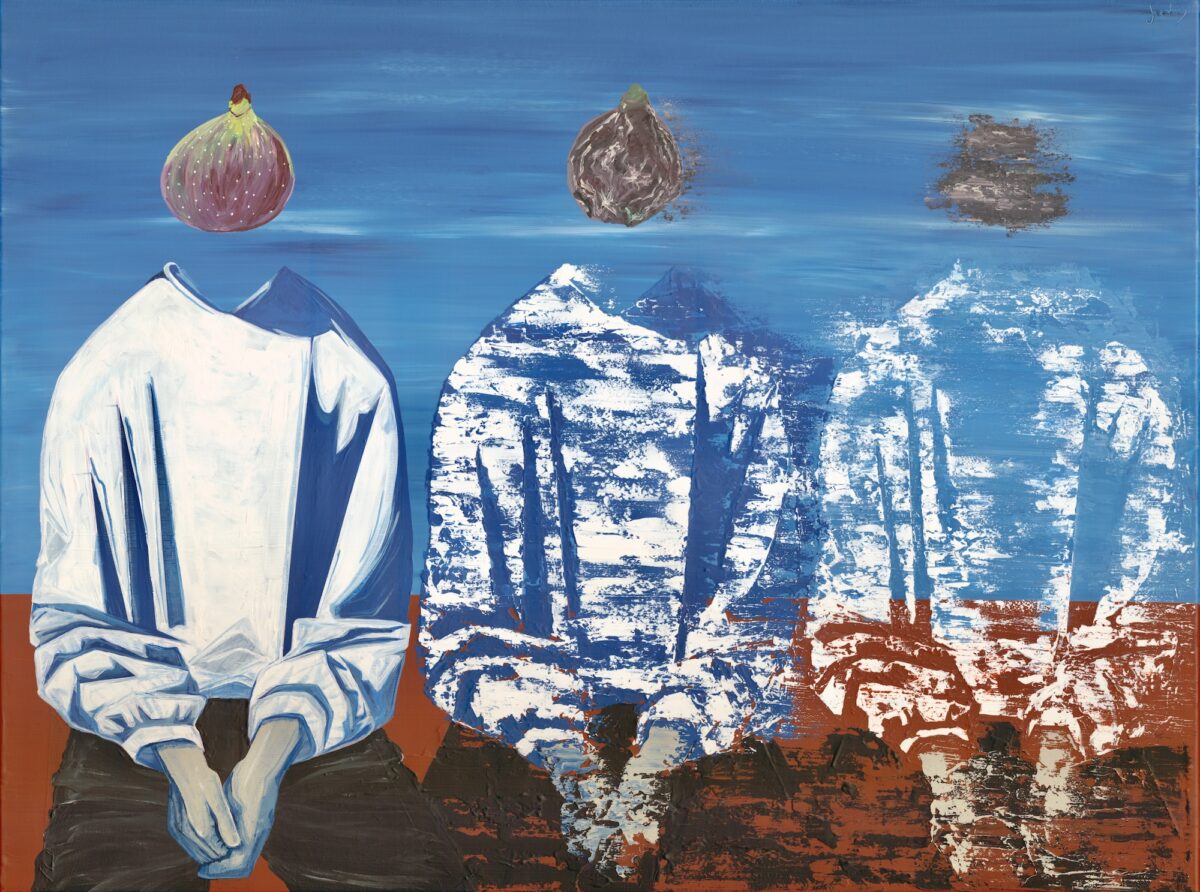
What larger themes are you looking to express in your work?
There’s a recurring existentialist theme. What is the human’s place within nature? Which is why I paint a lot of tired looking men and women relaxing in nature outside of the late capitalist hellscape. Like in Fig (2023), where the figure is dissolving back into nature. I have a fig tree in my garden and it was damaged during a big storm. So I’m addressing existentialist themes, but I’m also wrestling with the mortality of my fig tree. I’m questioning humanity, man’s place within the universe, within nature.

